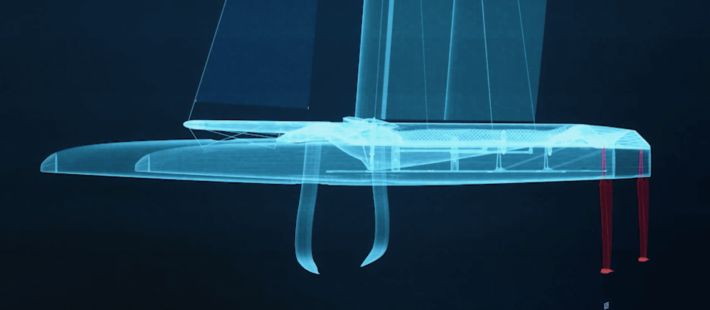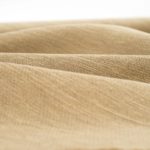In the past few years, the world of yacht racing has been completely changed thanks of the introduction of hydrofoil-supported catamarans, known as “foilers”. These special yachts, similar to high-performance aircraft, can achieve speeds of up to 50 knots, which is far faster than the wind propelling them.
An F50 catamaran preparing for the Sail GP series recently even broke this barrier, reaching an incredible speed of 50.22 knots (57.8mph) only powered by the wind. This was achieved in a wind of just 19.3 knots (22.2mph). F50s are 15-metre-long, 8.8-metre-wide hydrofoil catamarans propelled by rigid sails. These yachts can go so fast thanks of the overcoming of the drag force, caused by two primary physical mechanisms.
The first mechanism is friction. As the water flows past the hull, a microscopic layer of water is effectively attached to the hull and is pulled along with the yacht. A second layer of water then attaches to the first layer, and the sliding or shearing between them creates friction. On the outside of this is a third layer, which slides over the inner layers creating more friction, and so on. Together, these layers form the boundary layer – and it’s the shearing of the boundary layer’s molecules against each other that creates frictional drag.
A yacht also makes waves as it pushes the water around and under the hull from the bow (front) to the stern (back) of the boat. The waves form two distinctive patterns around the yacht (one at each end), known as Kelvin Wave patterns. These waves, which have the same yacht’s speed, are very energetic. This creates drag on the boat known as the wave-making drag, which is responsible for around 90% of the total drag. As the yacht accelerates to faster speeds, these waves get higher and longer. These two effects combine to produce “hull speed”, which is the fastest the boat can travel: in conventional single-hull yachts it is very slow, for example one of the F50’s size has a hull speed of around 12 mph.
A way to reduce both the frictional and wave-making drag and overcome this hull-speed limit by building a yacht with hydrofoils. Hydrofoils are small, underwater wings. These act in the same way as an aircraft wing, creating a lift force which acts against gravity, lifting the yacht upwards so that the hull is clear of the water. The other innovation that helps boost the speed of racing yachts is the use of rigid sails. The power available from traditional sails to drive the boat forward is relatively small, limited by the fact that the sail’s forces have to act in equilibrium with a range of other forces, and that fabric sails do not make an ideal shape for creating power. Rigid sails form a much more efficient shape than traditional sails, effectively giving the yacht a larger engine and more power. As the yacht accelerates from the driving force of these sails, it produces “apparent wind”, formed by true wind and the wind generated by the yacht movement. If there is enough true wind combined with this apparent wind, then significant force and power can be generated from the sail to propel the yacht, so it can easily sail faster than the wind speed itself. The combined effect of reducing the drag and increasing the driving power results in a yacht that is far faster than those of even a few years ago.
But all of this would not be possible without one further advance: materials. The yacht must have a low mass, and the hydrofoil itself must be very strong. To achieve the required mass, strength and rigidity using traditional boat-building materials such as wood or aluminium would be very difficult. This is where modern advanced composite materials such as carbon fibre come in. Production techniques optimising weight, rigidity and strength allow the production of structures that are strong and light enough to produce incredible yachts like the F50.
Source: Techxplore












